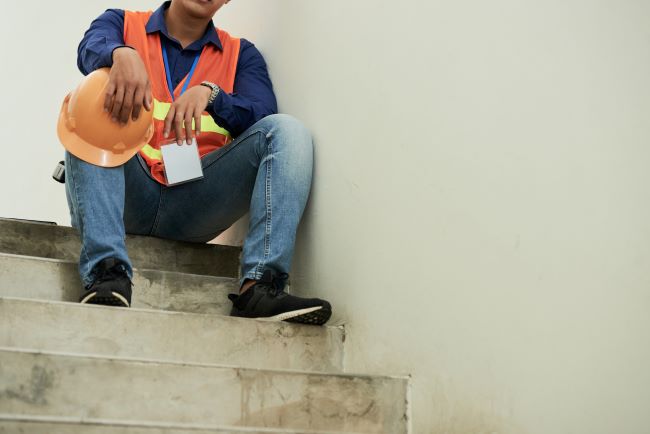Tackling the Psychosocial Factors That Impact Construction Safety

Construction is a dangerous industry. There are many established best practices to protect workers from physical injury. However, social and behavioral safety factors tend to receive less attention. According to a recent article on the CDC’s NIOSH Science Blog, construction leaders often overlook psychosocial hazards, even though these factors can have a significant impact on worker health and safety.
Physical vs Psychosocial Risk Factors in Construction
OSHA has identified four critical physical construction hazards: falls, electrocution, caught-in hazards, and struck-by hazards. The CDC says these four hazards account for 60% of all construction fatalities each year – it’s easy to see why these dangers receive so much attention.
Psychosocial risk factors are more difficult to quantify. The CDC says these factors “are the social, organizational, and managerial features of a job that affect the worker’s feelings, attitudes, behaviors, and physiology.” It can be more challenging to assess psychosocial risk factors, but research has shown they can have effects on both mental and physical health.
The Conditions That Lead to Psychosocial Risks
According to the CDC, conditions that can lead to negative psychosocial factors include:
High demands
Low control over work tasks
A lack of support from supervisors or coworkers
Job dissatisfaction
The ComPsych StressPulse Report shows that 62% of workers experience high levels of stress with extreme fatigue or feelings of being out of control. Common causes of stress at work include workloads (cited by 41% of workers), people issues (cited by 32% of workers), juggling work and personal life (cited by 18% of workers), and a lack of job security (cited by 9% of workers).
Workplace stress has always been a problem, but the pandemic has made it worse. The 2021 Stress in America study from the American Psychological Association found that 32% of adults were so stressed about the COVID-19 pandemic they were struggling to make basic decisions. Among millennials, 48% reported high stress levels that interfered with basic decision making.
The Impact of Psychosocial Risk Factors
The CDC says psychosocial risk factors can cause a variety of adverse physical and mental health effects, including:
Heightened stress
Poor safety outcomes
Increased risk for cardiovascular disease
Increased susceptibility to musculoskeletal disorders
Sleep disorders
Gastrointestinal issues
Substance use
Mental health disorders
Suicidal ideation
OSHA says long-term stress can increase the potential for workplace incidents because stressed and fatigued workers are less attentive at recognizing and avoiding hazards. Additionally, long-term stress can reduce motivation and focus (resulting in lower productivity levels) and can increase absenteeism and turnover.
These impacts can be dangerous on a construction site. A worker who is unmotivated, stressed, and exhausted due to poor sleep could make a fatal error. This is likely to increase the stress and reduce the morale of the entire workforce. If workers are relying on alcohol and illicit drugs to manage their stress and mental health issues, the risk of an incident could increase. Plus, high rates of absenteeism related to high stress and low morale could put more pressure on other workers, leading to a vicious circle of high stress levels.
How the Construction Industry Can Help Control Psychosocial Risks
Managing psychosocial risks may seem harder than managing physical risks, but the CDC has some guidance and resources to help you.
Firstly, you need to understand the psychosocial risk factors at your workplace. Tools including the Effort–Reward Imbalance Scale and the Job Content Questionnaire can help.
Next, determine which factors you can address. This means looking at the results from questionnaires to see which issues are prevalent among your workers. Then, you’ll need to dig into these factors more deeply to understand their root causes.
Several resources can help you develop initiatives to address psychosocial risks. These include:
By paying attention to the psychosocial factors impacting construction safety, construction leaders can take control of their risk management and costs. Having the right construction insurance is also critical. BNC provides insurance coverage designed for the construction industry. Learn more.



